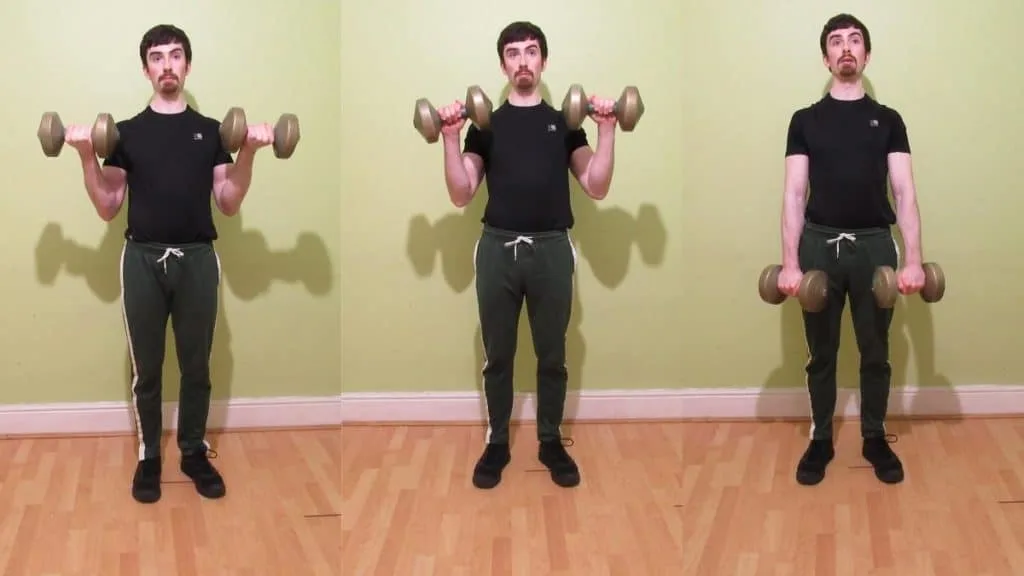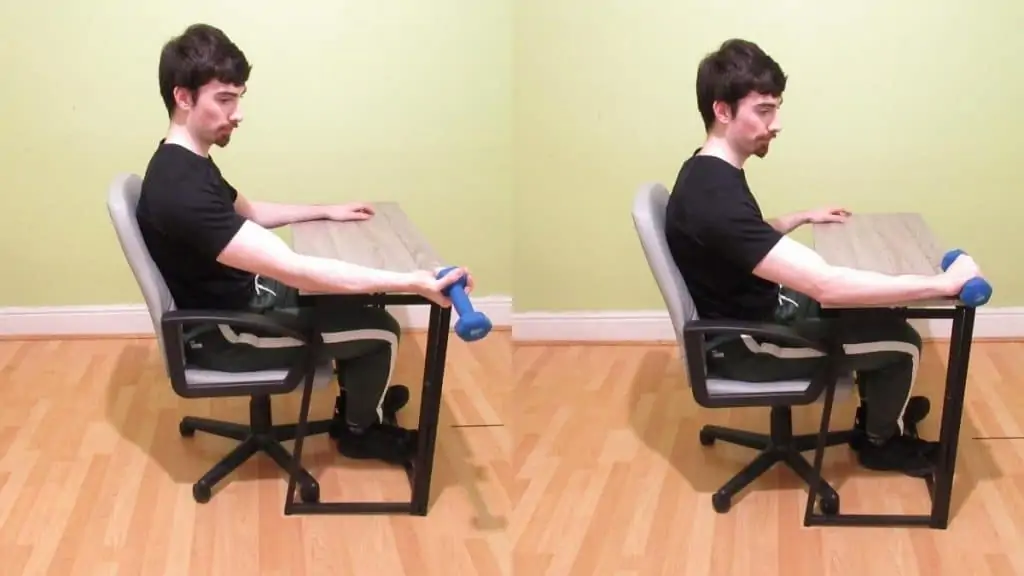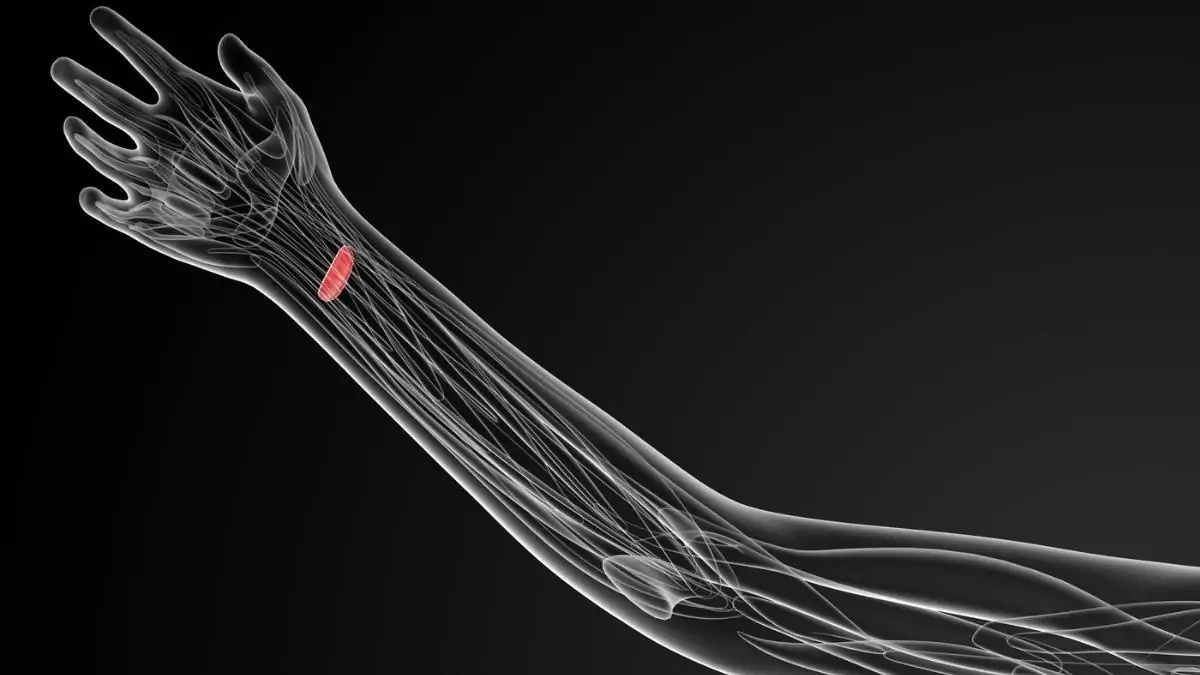It’s easy to take many of the forearm muscles that we have for granted. And the pronator quadratus is no exception to this tendency. However, I think that’s a shame. Because without our handy little pronator quadratus, we wouldn’t be able to perform wrist supination or pronation, which means that meatheads wouldn’t be able to train their biceps properly!
Related posts
- Flexor carpi radialis workout
- Flexor carpi ulnaris stretching exercises
- Flexor digitorum profundus workouts
- Exercises for the flexor digitorum superficialis
- Flexor pollicis longus workout
Pronator quadratus anatomy
Like countless other small muscles, the pronator quadratus is part of the anterior compartment of the forearm. More specifically, it’s part of the trio of deep flexors that sit below the superficial flexors of the forearm.
The pronator quadratus originates from your ulna and connects to your radius. This gives it a square orientation and a short belly compared to many of the surrounding muscles, which are also thin but tend to be much longer.
The primary function of the pronator quadratus, as the name suggests, is forearm pronation. [1] This is where you turn your hand from a palm-up position to a palm-down position.
Pronator quadratus exercises
I’ve said it before, and I’ll say it again, if we all did special exercises for each and every small lower arm muscle, then we’d all have no life because we’d be living in the gym.
However, if you’re having problems that are specific to your pronator quadratus, then doing direct training can help.
I’ve split this pronator quadratus workout into a stretch, a strength exercise, and a bodyweight drill so that you can work it from multiple angles and get better results.
1. Pronator quadratus stretch
Since there is so many neighboring and overlapping muscle, it’s hard to completely isolate your pronator quadratus with a stretch. [2] However, this one comes pretty close.
- Hold one hand out with your palm facing up.
- Turn your pinky finger inwards and flex your wrist.
- With your other hand, apply a gentle stretch to your first hand while maintaining the initial supinated (palms up) position.
- Hold it for 20-30 seconds, and then repeat the motion with your other arm.
2. Forearm pronation

Out of the 3 pronator quadratus exercises, this movement is the most simple. It requires absolutely no equipment, and you can even do it while sitting at your desk. That said, if this weightless variation becomes too easy, then you can also wear wrist weights (or use dumbbells) to increase the difficulty.
- Flex your elbows to 90-degrees as if you were doing a bicep curl.
- With your palms up and elbows tucked into your sides, pronate your wrists by turning your palms down.
- Supinate your wrist by once again turning your palms up. Be sure to focus on rotating your wrists rather than just shaking your hands back and forth.
3. Zottman curl

If you want to get buff while also strengthening your pronator quadratus, then this is the exercise for you. While it’s best done with dumbbells, you could also use shopping bags or cartons of milk. The only requirement for the equipment is that it allows you to rotate your wrists.
- Hold two dumbbells by your sides with your wrists in a pronated position.
- Curl the weights up by first supinating your wrists, and then flexing at the elbow until you feel an intense bicep contraction.
- Pronate your wrists once your biceps are contracted, and then, while maintaining this pronation, lower the weights back down to your sides.
- Repeat for 2-4 sets of 8-12 reps.
See also
- Anconeus stretch
- Brachioradialis exercises
- Extensor carpi radialis brevis workout
- Extensor carpi radialis longus workout
- Exercises for the extensor carpi ulnaris
- Extensor digitorum stretch
- Extensor pollicis brevis drills
- Palmaris longus stretch
- Pronator teres workout
Which pronator quadratus exercises are right for you?

If you spend a lot of time typing on your computer and perform repetitive work with your hands, then over time, your pronator quadratus can become tight. That’s why my first port of call is always the pronator quadratus stretch.
While the regular pronator quadratus exercises can help to strengthen the muscle, the stretch helps to relieve some of the built-up tension. This may make it easier to go about your daily activities that require wrist pronation, such as holding a computer mouse.
I particularly like the curl variation that I showed you because it’s essentially a weighted version of the simple wrist pronation exercise. As such, it works many more arm muscles than just your tiny pronator quadratus.
As I’m fond of saying, if you can train multiple muscles well with one exercise, then there’s no use doing 3-4 different drills just for the sake of variation or because it has a specific muscle tied into the exercise name.
References
- Rad, A. (2020, October 29). Pronator quadratus muscle. Kenhub. https://www.kenhub.com/en/library/anatomy/pronator-quadratus-muscle
- Pronator Quadratus. (n.d.). Department of Radiology University of Washington. https://rad.washington.edu/muscle-atlas/pronator-quadratus/

